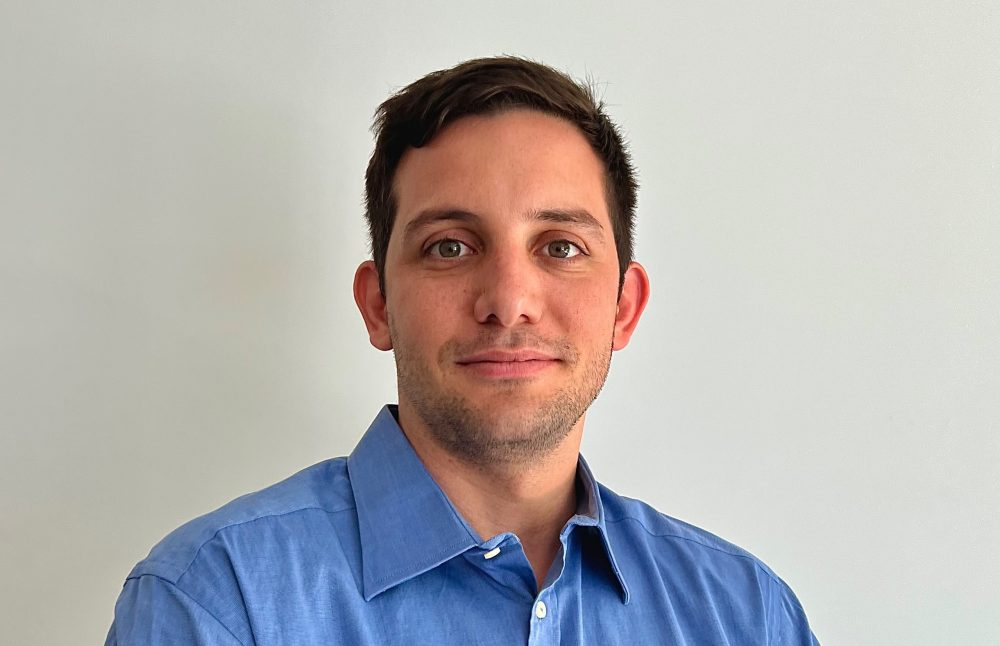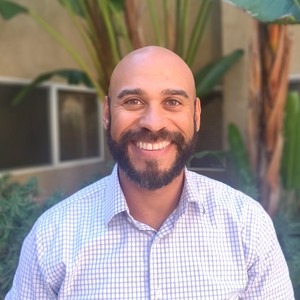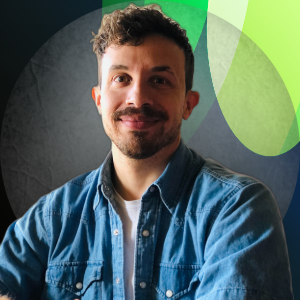As VP of Growth at EuroVPS, I had to make a LOT of decisions, daily. This got exhausting, especially if I had multiple good ideas on how to do something, but wasn’t sure which to choose. Moments like these inspired me to build GrowthMentor. Does this resonate? If so, I’d love to try and help you.
Lessons Learned: Product-Market Fit with Aliya Grig
Are users ready to pay to solve this problem?
Sometimes the problem exists, but they might not be ready to pay.
For example, there are a lot of fitness apps that are good to have but face this problem.
In this episode, Aliya is sharing with us her Product-Market Fit experiences.
You learn more about:
- An interesting definition of Product-Market Fit (PMF)
- The biggest mistake founders make on their way to PMF
- How to understand if users are ready to pay to solve a problem
- Talking to your users early in your startup’s journey
- Aliya’s 3-step framework for customer interviews
- Signs that indicate that PMF is not happening
And all these in less than 17 min.
Transcript
Foti Panagio: Thank you so much, Aliya, for jumping on this podcast with us. In today’s episode, we are going to dive into the Product-Market Fit, and how to reach it. Some best practices and tips from your extensive experience as a founder and advising founders as well. So how about a brief little introduction to yourself and your background?
Aliya Grig: Thank you very much, Foti. I’m happy to join this podcast. My name is Aliya Grig. I’m the founder and CEO of Evolwe AI, its well-being platform based on creating an AI companion. I have a 14-year background in launching different startups from the areas like hardware tech, and space tech. Based on my background, I can share a lot about how to reach Product-Market Fit for B2B and B2C, I’ll be happy to share this experience with you.
Foti Panagio: Let’s take it from the top. How do you define Product-Market Fit?
Aliya Grig: Well, I generally seek the determination of a Product-Market Fit as when users locked your doors and ask when you will deliver the product to them. And when is the launch date. So for me, it’s actually Product-Market Fit. But of course, it’s like a very ideal explanation and an ideal world in a reality. Product-Market Fit is when you really created a product, which really solves the real problems of real users. And I specifically mentioned the world real because sometimes it can be like the problems that we as the founders or the product managers think are important. But in reality, they are not important at all. So, I would say Product-Market Fit is to deliver a great product, which will solve better, quicker, and cheaper problems, which are important for the users. So for example, it’s not very important to solve problems that have a small group of users, like 15 people, and have a non-scalable product.
Foti Panagio: I love that explanation. So, what’s the biggest sort of mistake that you’re seeing founders make when they’re in the early stages of growing their startup and trying to find Product-Market Fit?
Aliya Grig: Well, I think that there are a couple of main challenges at the early stage. So the first really important part is to understand who are your users and what are their real problems because we can, we can face with bias with our cognitive bias when we think that this is a problem based on our reality and our world. And in fact, this problem doesn’t exist or it’s not such a such important for the users. The second part is to understand whether our users are ready to pay to solve this problem, because sometimes the problem exists, and people are not ready to pay for it. So for example, if we take a lack of water or lack of electricity, people will be ready to pay hundreds of dollars to solve this problem because it’s really an essential need, I would say. Of course, all of us, know the theory of vitamins, pills, and medicine. So all of us, don’t want to deal with startups, supplements, and vitamins. Because normally, it’s not such a big issue for users. So for example, some would say there are lots of like fitness apps. And they usually face this, this challenge because it’s kind of like it’s a vitamin, it’s a supplement, they don’t solve kind of like life death problems or something like really important. So the second point is to understand how important and if users are ready to pay for this problem. And it’s better to understand this by asking them directly through jobs to be done interviews. And to understand that you have some other kinds of like, ways to solve this problem, which they already pay for. The most important part is to understand how frequent is a problem. So for example, if Facebook users use it daily, weekly or monthly, and like by doing this, like small research, actually, what I mentioned you can do like, if you will be really focused in a couple of weeks time is to understand if you can really create a product which can solve this problem, if it is applicable and if you can receive enough fonts from users, not from investors trustable but from users so that they can pay for this problem. And the biggest mistake I see when people try to create or build a product is that they start doing the tech part. First, they start building the product, and they don’t talk to users at all. I was in the same shoes myself maybe 10 years ago. And I spent over 600k of my personal savings on one of my startups. When I finally decided that it was time to start talking to users. And it’s Kevin’s unfortunately, after like, nine months of a very intense operational job. So I highly recommend starting with this small exercise. And you don’t need many people, many employees, and a team to do this. You can do it on your own. You just need your laptop, your brain, and ways to look for users.
Foti Panagio: You mentioned you invested a significant amount of your own personal money into it. And then you started talking to users. When you started talking to users today, were they paying users? Or were they sort of like beta early access people?
Aliya Grig: We started to build an educational startup about space. We spent all these investments to build a platform for education, to build the product itself. Then we started to do marketing activities to attract users. They didn’t use much our product. We had lots of problems with them and they didn’t pay us. So we decided that it was time to start talking to users. So it was like a potential audience. We started talking to different target groups that send their needs. And then like, actually, we throw away all the work we’ve done and build a new product from scratch. But it was a great product, which addresses the user’s needs. It was specifically a student audience. And then the second time it worked great.
Foti Panagio: That was a charm. Right?
Aliya Grig: Yeah.
Foti Panagio: So when you started interviewing people, did you start with a text right away or interviewing users? I mean, can you tell us a little bit about the questions you ask or you tried to ask during these interview calls? How do you structure it?
Aliya Grig: Yeah, sure. So, basically, during all these years, I created my own framework on how to make this user research. So the first part before even doing like, an interview, it’s really important to split all your users into different target groups. You should do this to have like better results and to understand their behavior. So you split your users into two to three groups. So for example, women not working with kids like men, and so on. And you prepare, like, all the all your questionnaire, like based on three different types of questions. So the first part is like, I will call it like qualifying questions. When you understand if a user has this problem, how much does he spends, like, what? What’s his portrait? So if he feels this group a lot. The second part is the job to be done, a group of questions, specific types of questions where you ask which jobs they have, and which results they want to achieve. Or they achieved through solving this problem in which emotions they’re headed off to solve this problem. And it’s a really important part because in the modern world, we don’t sell products, we sell emotions, and we sell results to the users. And the third part is about the existing way they solve the problem. And so it’s basically about your direct and indirect competitors. So for example, if you solve a problem with burnout your indirect competitor can be Netflix or Instagram. And it’s also important to understand that because people spend money on subscriptions. It’s important for you to understand how you can solve better this burnout problem. And then it’s a really important step to analyze all these user interviews and results and to prepare all the insights product insights. In my team, we usually create a value proposition canvas with user personas, where you put different gains, and pains, and then you start to create. It’s like a product around this knowledge base. A small tip, it’s also important when you start doing user interviews, try to like do it with a video because sometimes people think that it’s easy just to make a questionnaire through Google Forms. Like guys, it doesn’t work at all, because you will lose 90% of the information. And it’s impossible to have a video call for like 20 or 30 minutes and to speak directly to a person because only like icons can provide you all the details and all the like information and so on. And it’s also easier for a person to be open through the call.
Foti Panagio: I totally agree. In terms of like, right after the interview happens, can we can you talk a little bit about if you have a process for processing that qualitative data, the unstructured qualitative data? And how do you derive insights from that in a structured way that can you can make insightful decisions probably based on?
Aliya Grig: Sure. So, we usually split all the interviews into the parts of the jobs of the user, and rank them in terms of their importance, readiness to spend for this job, and how painful the job is. And then we select the most painful and the most expensive job. We think about if we can deliver and create products for this job in order to solve this. And then we create, as I mentioned before, a value proposition canvas with different gains, pains, and products solution, which can address these gains and pains of the user. Then we create a CJM customer journey map, where we create all the way how so how the person goes, and where he can gain the most value from the product. For example, from the app on the website, and where he starts to understand that this product can solve his problem. Then we start to create an MVP and test it. So it’s like, the second stage of the Product-Market Fit. I would say that the most important part here is to make a scoring of these jobs and to really understand if you can solve it or not, or if you can solve it better, cheaper, and quicker, than the other competitor.
Foti Panagio: Not everyone’s gonna get Product-Market Fit, right? I mean, what are some of the telltale signs that it’s just not going to happen? And maybe fold your cards? You’ve gone through one failed startup? What were those points where you were like “Alright, I’m just gonna cut my last year and either completely pivot, or scrap it, salvage it?”.
Aliya Grig: Well, I would say vice versa. So I mean, that’s, it’s important to test hypotheses fast, and test your MVP test and to create this MVP, like, in a week in two weeks time, because if you spend like six months while doing product after user interviews. In other words, we all know, these statistics, like nine of 10, startups fail, and they fail because they build this expensive, amazing product, which doesn’t reach Product-Market Fit. So, I would say to them in a lot of ways. So, I would focus, like yourself as a founder or your team, on how you can create in a week or two weeks, and then repeat tested with your target group, understand if it really works, and if people are ready to pay for this product and then just scale. And if this MVP fails, then create another one, like elaborated, or make a pivot. So for me, it’s like better progress. Because, for example, in my current startup, an AI startup, we started first with another hypothesis and another product. The product we have right now was like maybe I would say MVP, version certified. Like, it’s not even like MVP number five, it’s like 75 or even 40. Because through all this time, we constantly test various hypotheses. It’s, well, small now it’s still the same area. So we don’t go like two totally different directions. But we still focus on how to deliver to the target groups and more. So, the best product for them. Another checklist that you can do for yourself standard that you need to stop and pivot completely, that first of all, it’s hard to attract users, even for user interviews. And this will be like the first sign that something is wrong. Because if people are even are not trained to talk about this problem, it means that it’s not interesting and not important for them. The second point will be that people are not ready even to go to the website and check the information and you have a really low conversion rate from all your paid campaigns. It means also, something’s wrong, because it’s not about the design, it’s something about this, they’re the idea. Something it’s of course, like if, if all their conversion rates from onboarding and so on, it doesn’t work and has like, almost zero. And, like, I even don’t mention retention rates, and they’re out virality because it’s like, second metrics, which show you that something is wrong. At this point, I would be really honest with myself and just look at the situation in reality. So, if people are ready to invest their time in an interview or to look at your website or not. If not, I think it’s something wrong, and you need to rearrange things in your product.
Foti Panagio: I think the underlying theme across all the advice you’ve given is to speak to users. And yeah, be honest with yourself and maintain this sort of experimentation mindset, pivot when needed. And yeah, always, always be testing things. Aliya, thank you so much for sharing your insights with us. Are there any preferred ways that people can contact you and get to know you a bit more?
Aliya Grig: Yeah, sure. So, you can find my contacts on the GrowthMentor platform to help with the questions regarding Product-Market Fit, like user experience, behavioral engineering, and customer experience. You can also contact me through LinkedIn. I’ll be happy to help and to explain more about all these areas. Thank you so much, Foti.
Foti Panagio: Thank you as well.
In this episode
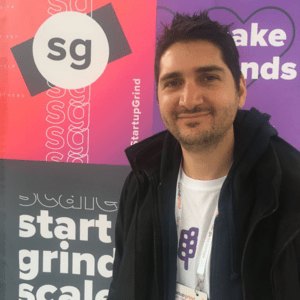
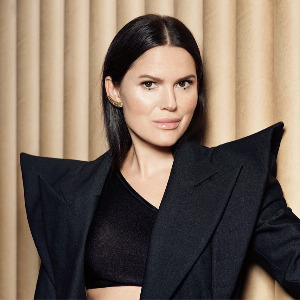
Founder, CEO Evolwe AI and Cosmos City (innovation hub) Top 100 Women in AI Forbes 30 Europe 14 years background as a founder of tech startups. Successful exits from 3 spacetech startups. Fundraised over $22 mln. Collaborated with NASA, Google.
Join the community
Enjoy the peace of mind that advice is always only one Zoom call away.
